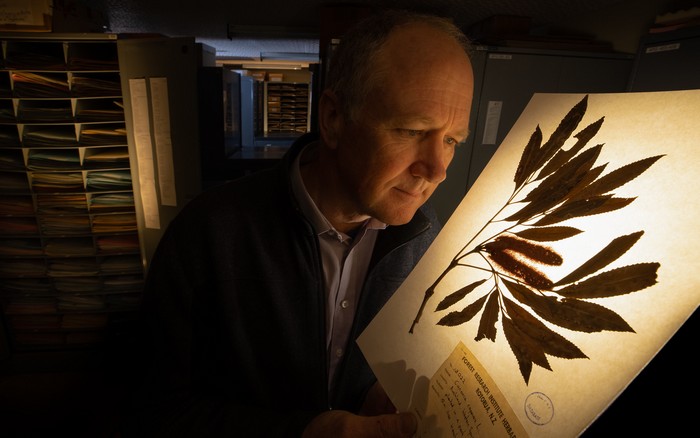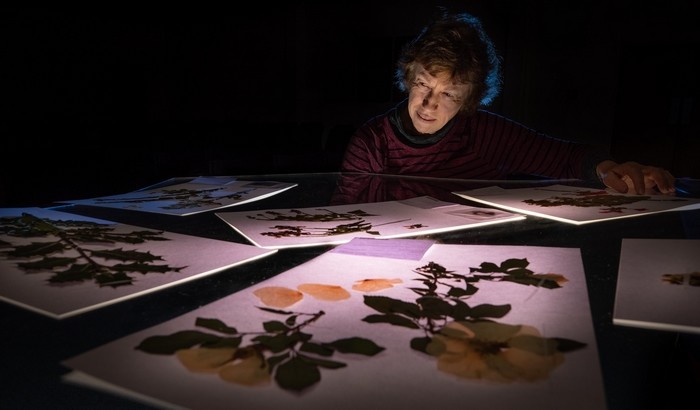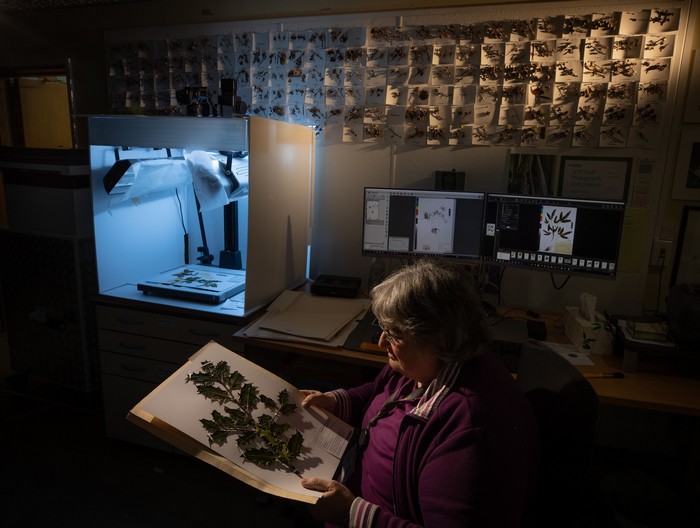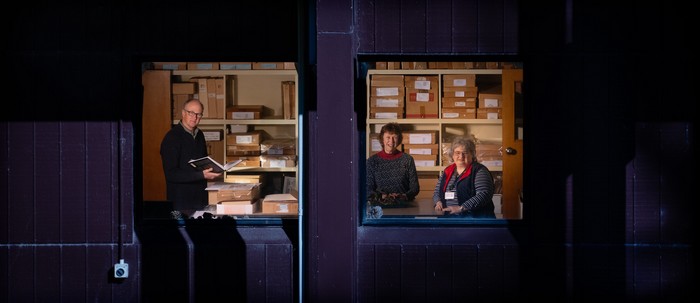National Forestry Herbarium turns 75

2020 marks the 75th anniversary of the National Forestry Herbarium, a specialist collection of permanently preserved plant specimens focusing on cultivated tree species associated with forestry and amenity planting.
The herbarium is managed by Scion as one of New Zealand’s Nationally Significant Collections and houses the country’s largest collection of planted and indigenous forest tree species. Established in 1945, it is home to about 31,000 fully catalogued, geo-referenced and securely quarantined specimens in tailor-made storage held at Scion’s Rotorua campus. Each specimen in the collection holds a wealth of information along with where, when and who collected the specimen.
Over the years, the herbarium’s collection has contributed to a huge range of important research. This has included the National Forest Surveys and identifying host species for biosecurity responses such as painted apple moth, Dutch elm disease and myrtle rust.

A brief history
The herbarium predates Scion and its predecessor the Forest Research Institute. It was founded in 1945 as part of the Forest Experiment Station when the National Forest Survey began (the decade-long survey of indigenous forest for timber). The plant samples from this time contributed to the fledgling herbarium, and the records now form a dataset held by Manaaki Whenua – Landcare Research. By 1952 the herbarium had secured over 4,100 specimens, which were mostly indigenous species.
The second large wave of collections occurred in conjunction with another decade-long survey from 1956. The New Zealand Forest Service carried out the Ecological Survey to map and describe forest types based on their ecological characteristics. When the survey was completed, the plant reference information was added to the herbarium.
The 1950s and 60s also saw New Zealand’s indigenous timber supply begin to decrease. Research interest surged in exotic conifers as a fast-growing replacement for indigenous tree species. Eucalypts were also studied and collected in Australia in large numbers during this time.
During the 1970s and 80s, an ecological focus led to many herbarium records from regional vegetation surveys being vouchered (certified as a reference material for taxonomic purposes). This included samples from a buried forest in Pureora, dating back 1800 years to the time of the last Taupō volcanic eruption.
Databasing of herbarium specimens commenced in 1991 and took seven years to complete. The National Forestry Herbarium is the only fully databased herbarium in Australasia. Specimen images are being added to the database and to-date around 45 per cent have been completed. The database is available online at nzfri.scionresearch.com and provides a resource for researchers worldwide.
The herbarium team continues to add specimens of cultivated woody plants in New Zealand to the collection. This valuable reference material supports forest biosecurity surveillance programmes through identification of hosts of potentially new plant pests and diseases in our indigenous, plantation and urban forest environments.

What’s in the collection?
Today, the herbarium contains a wide range of mainly New Zealand native, naturalised and cultivated plant specimens. Plantation tree species from Australia, Fiji, Samoa, Vanuatu and Mexico are all well represented. Eucalypts and pines make up approximately 23 per cent of the collection. More than 2,800 specimens of cultivated eucalypts have been collected, representing 395 species.
The herbarium team is currently constructing an online interactive key to species of the Myrtaceae plant family present in New Zealand. This plant family includes pōhutukawa, mānuka and rātā, as well as introduced ornamental shrubs such as Australian bottle-brushes, and fruit trees such as feijoa and guava. The project is in collaboration with scientists from Manaaki Whenua – Landcare Research and is part of the response to the arrival of myrtle rust in New Zealand.

What’s next?
All biological sciences are underpinned by taxonomy, biodiversity infrastructure such as the herbaria, and the expert knowledge of staff who manage and curate these collections. Reproduceable biological research would not be possible without taxonomic knowledge and resource.
The role of taxonomists and collections will only continue to increase in importance, particularly to our environmental and economic sustainability as climate change threatens to warp the distribution of plants across New Zealand and around the world. Our herbarium and the people who continue to care for it are unseen layers of security helping to protect our economy from biosecurity threats.
Herbarium curator Dr Matt Buys says, “The herbarium has been privileged to have had some dedicated curators in its 75 years, and it’s a great honour to be counted among them. We will continue to ensure that this collection serves science and New Zealand well into the future”.
Scion’s management of the herbarium is supported by the Ministry of Business, Innovation and Employment.
